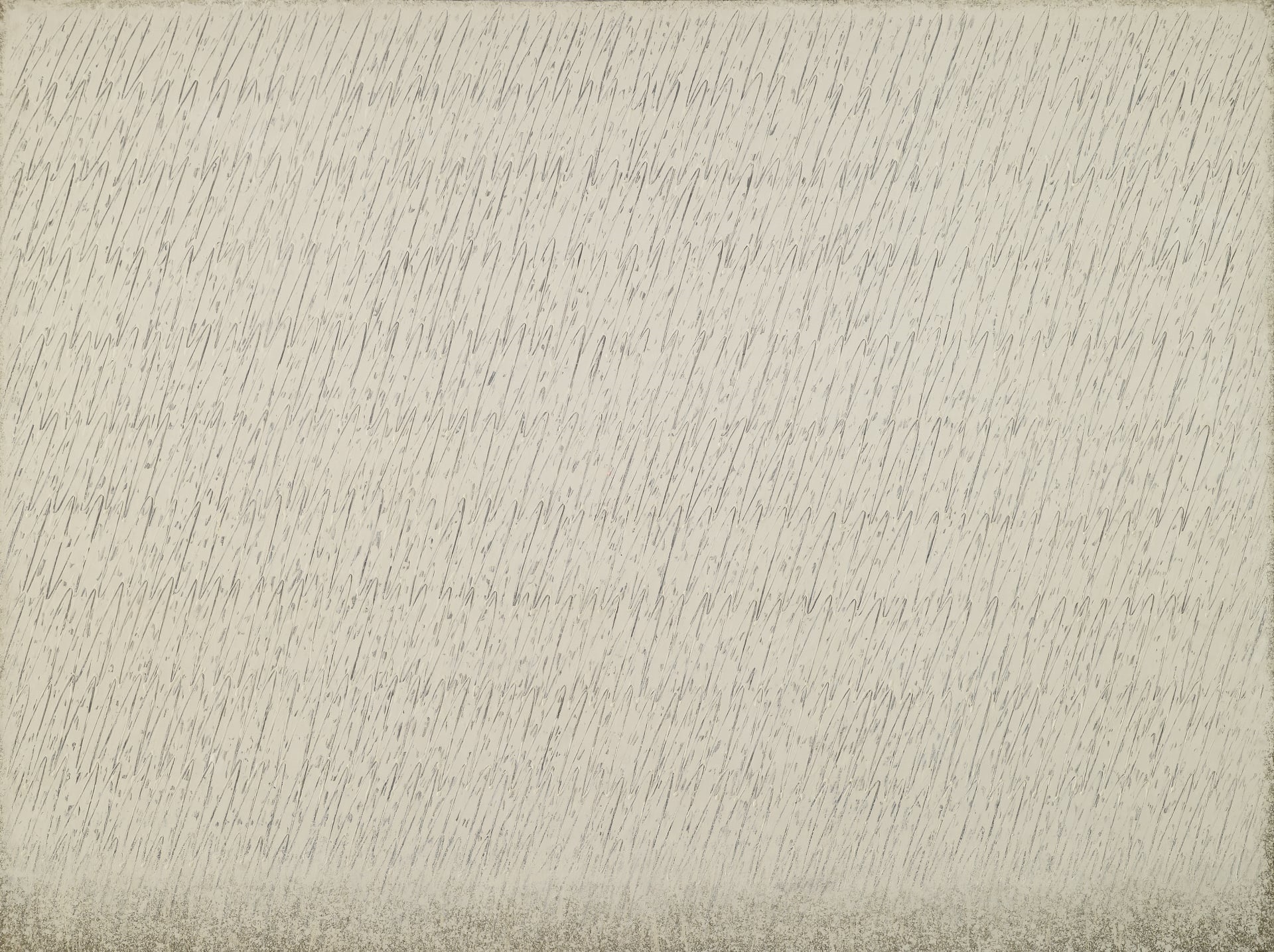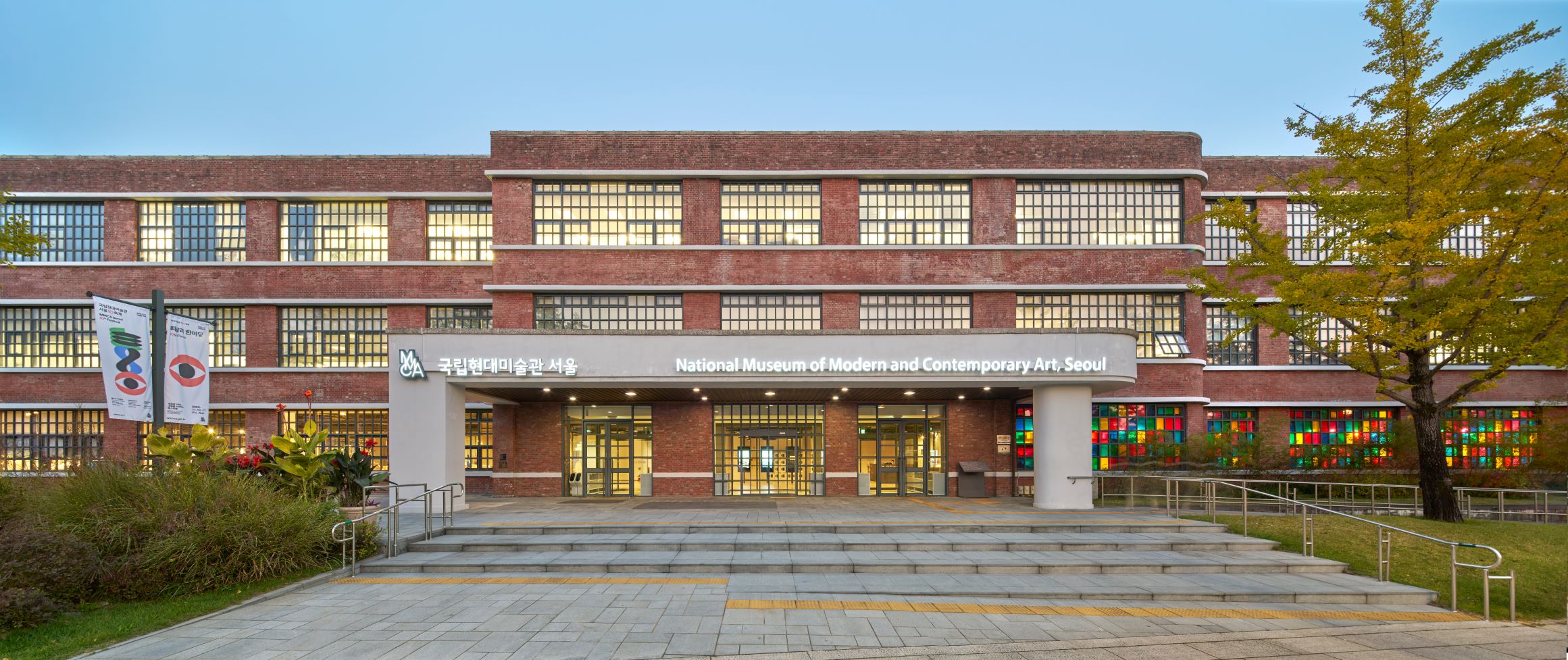
Dansaekhwa: Korean Monochrome Painting, Poster, 2012, MMCA Art Research Center Collection
Dansaekhwa: Korean Monochrome Painting
* Source: MMCA
Related
-

Yun Hyongkeun
Yun Hyongkeun(1928-2007) was a prominent Dansaekhwa artist. He was born in Cheongju, Chungcheongbuk-do Province. In 1947, he enrolled in the College of Fine Arts of Seoul National University but was expelled because of his participation in the demonstration against the nationalization of Gyeongseong Imperial University (later Seoul National University). In 1954, he transferred to the College of Fine Arts at Hongik University and graduated in 1957. After graduation, he taught at Cheongju Girls’ High School and Sookmyung Girls’ High School. However, he suffered hardships due to his criticism of social irregularities. Yun had steadily engaged in creating artworks since the 1960s. He held his first solo exhibition at the Press Center of Korea Gallery in 1966 and took part in the São Paulo Biennale in 1969. He began working as a full-time artist in the early 1970s when he was in his mid-40s. Starting with a solo exhibition at Myeong-dong Gallery in 1973, he held solo exhibitions almost every year until he was invited to become a professor at Kyung Hee University in 1984. He was also invited to join major domestic and international special exhibitions, which helped him establish himself as a leading Korean monochrome painter. Among noteworthy special exhibitions in which Yun participated are the second Independants and the first Seoul Contemporary Art Festival in 1974, Korea: Facet of Contemporary Art held at the Tokyo Central Art Museum in Japan in August 1977, Korea: The Trend for the Past 20 Years of Contemporary Arts held in November 1978, the second Paris International Contemporary Art Fair in 1978, The Status of Contemporary Korean Art held at the Kyoto Municipal Museum of Art in Japan in 1982, and the Korean Contemporary Art Exhibition: An Aspect of the Late 1970s that traveled throughout Japan in 1983. Yun’s Burnt Umber & Ultramarine series is visually based on the effect of ink smearing on traditional Korean paper. Burnt umber & ultramarine is a mixture of blue representing the sky and dark brown symbolizing earth. The contrast between such work by Yun and milky-white color used by his contemporary Park Seo-bo in the Ericture series provides a significant basis for reconsidering the commonly held view of Dansaekhwa as “white”-centered painting or as painting “discovered by the Japanese.” After the encounter with Donald Judd in 1991, Yun’s work became more simplified and emphasized geometric shapes in place of the smearing effect, giving it a sense of rigidness.
-

Park Seo-Bo
Park Seo-Bo(1931-2023, real name Park Jaehong) belongs to the first generation of artists who received art education in Korea after Korea’s liberation from Japan. He was a leading figure in Art Informel and Dansaekhwa. He was born in Yecheon, Gyeongsangbuk-do Province. He majored in Western painting in the College of Fine arts at Hongik University and graduated in 1955. He served as a professor at Hongik University and the board president of the Korean Fine Arts Association (Hanguk misul hyeophoe). Park made his debut as a painter in 1956 through the Four Artists Exhibition that declared resistance to the National Art Exhibition and the established generation. After presenting abstract expressionist work completely different from the established art at the third Hyundae Fine Artists Association exhibition in 1958, he led the Art Informel movement until the mid-1960s. In the 1970s, he headed large-scale special exhibitions, including Independants, the Seoul Contemporary Art Festival, Ecole de Séoul, and Korea: Facet of Contemporary Art. He also played a key role in establishing “Dansaekhwa” as a style of Korean painting in the 1970s. His oeuvre can be divided into three periods. The first period (late 1950s–mid 1960s) is referred to as the Art Informel period, during which Park depicted the post-war situation with distorted and deconstructed human forms, dark colors, and rough matière, particularly in the Primordials series. During the second period (late 1960s–early 1970s), he focused on the modernization of tradition, presenting optical and geometric abstraction with five colors representing the five cardinal directions as the dominant compositional element under the thesis of hereditarus. During the third period (1970s–2023), which is known as the period of monochrome painting, he presented the Ecriture series, in which performance was fundamental to his creation. The Ecriture series can be divided into two periods: before and after year 1982. In the former period, Park repeatedly applied milky oil paint to a canvas and before it dried, drew lines with a pencil or a tool with a sharp tip, thus leaving traces of this act on the canvas. In the latter period, he used water-based paints instead of oil-based paints in an effort to more directly capture his emotions with bright hues inspired by the colors of nature. Until his death, he sought to build the identity of Korean art through various methodologies within a single thesis of ecriture and elevated Dansaekhwa to an international level.
-

National Museum of Modern and Contemporary Art, Korea (MMCA)
A national museum established in 1969 that researches, collects, and exhibits modern and contemporary art. As of 2018, there are branches in Gwacheon, Deoksugung, Seoul, and Cheongju. When first established, the National Museum of Modern Art (now MMCA) was located within Gyeongbokgung palace. In 1973, the museum moved to the East Wing of the Deoksugung Seokjojeon building. Then, in 1986, the museum moved to its current location in Gwacheon, to occupy a new building equipped with an outdoor sculpture exhibition space, and has since opened a new chapter in Korean art. The perceived need for a space to focus specifically on Korean contemporary art led to the establishment of further site, the National Museum of Contemporary Art, Deoksugung in 1998. In November 2013, a further demand for contemporary art exhibitions led to the establishment of another Seoul branch being created in the Defense Security Command building in Sogyeok-dong, Jongno-gu, which has since its inception engaged in multifaceted exhibitions of both domestic and overseas contemporary art. Also, as a further component of the MMCA complex, a disused tobacco factory in Cheongju was remodeled to provide a home to the National Art Storage Center.
Find More
-

Korea: Facet of Contemporary Art
Korea: Facet of Contemporary Art was an exhibition held at the Tokyo Central Art Museum in Japan from August 16 through August 28 in 1977. The Japanese art critics Nakahara Yūsuke and Komura Masataka, and Yamamoto Takashi, president of the Tokyo Gallery, personally traveled to South Korea and selected participating artists and the works for the exhibition. Each of the selected artists submitted three to ten works. They included Quac Insik, Kwon Youngwoo, Kim Kulim, Kim Guiline, Kim Yong-Ik, Kim Jinsuk, Kim Tschang-yeul, Park Seo-Bo, Park Jangnyun, Suh Seungwon, Shim Moon-seup, Yun Hyongkeun, Lee Kangso, Lee Dongyoub, Lee Sangnam, Lee Seungjio, Lee Ufan, Chin Ohcsun, and Choi Byungso. The exhibition catalogue contained a preface by Nakahara Yūsuke and plates of works that the nineteen artists produced between 1976 and 1977. Korea: Facet of Contemporary Art was the largest exhibition on contemporary Korean art to be held in Japan since the Contemporary Korean Painting in 1968 at The National Museum of Western Art in Tokyo. Nakahara Yūsuke viewed that the works included in the exhibition are all based on black and white and that this common feature is not “anti-colorism” but each artist’s painterly interest in the unification of the background and “what is drawn,” the things other than colors, and their visualization of it in their own way. Following the exhibition Korea: Five Artists, Five Hinsek “White” held at the Tokyo Gallery in 1975, this exhibition enabled artists, who had worked in monotone painting, to participate in an international-scale exhibition as a group, contributing to shaping the perception that they represented Korean contemporary art.
-

Korea: Five Artists, Five Hinsek—White
An exhibition held from May 6 to 24, 1975 at the Tokyo Gallery. Kwon Youngwoo, Park Seo-Bo, Suh Seungwon, Lee Dongyoub, and Hur Hwang participated in the exhibition. Yamamoto Takashi, the president of Tokyo Gallery, and Nakahara Yusuke, an art critic, planned the exhibition under the premise that the color white was a shared characteristic within the paintings of several young Korean artists. In the preface to the exhibition, Nakahara stated that the color white reflected a sensibility that surpassed any personal perspective. Lee Yil, an art critic, co-wrote the preface. He was of the opinion that the use of white in Korean painting symbolized a unique aesthetic sensibility, and that it was also significant as a psychological symbol. He stated the characteristic of the work of the five painters as “white monochrome”—a “single psychological vision that embraces the world”, distinct from European monochrome. The exhibition is seen as the beginning of the mainstream interest in monochromatic painting within Korea.






